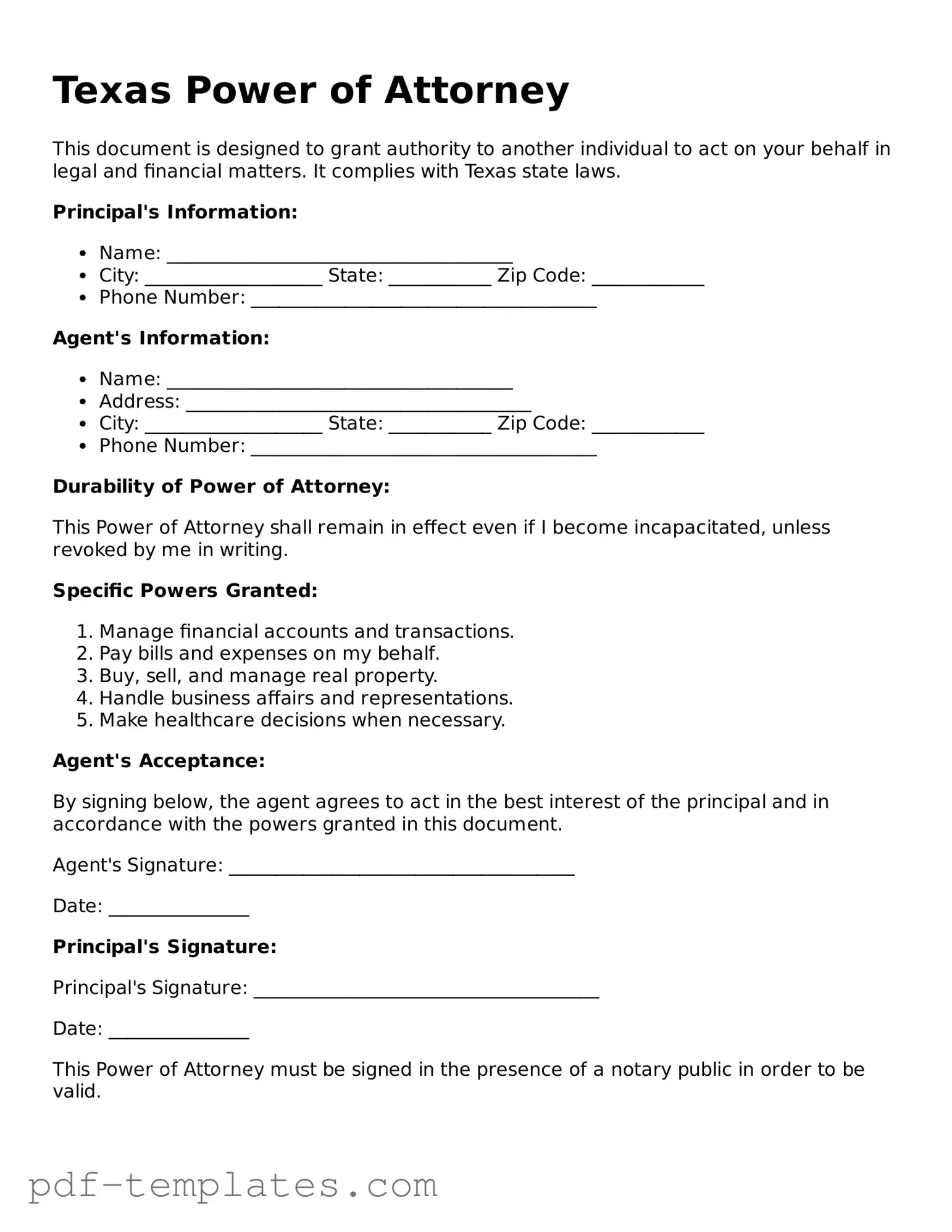The Texas Medical Power of Attorney is a document that allows individuals to designate someone to make healthcare decisions on their behalf if they become unable to do so. Similar to the general Power of Attorney, it grants authority to a specific person, known as the agent, to act in the best interest of the principal. This document focuses specifically on medical decisions, ensuring that the agent can make choices regarding treatment, procedures, and end-of-life care based on the principal's wishes.
The Durable Power of Attorney is another related document. It remains effective even if the principal becomes incapacitated. This feature is crucial for long-term planning, as it allows the agent to manage financial and legal matters without interruption. Like the Texas Power of Attorney, it is important to specify the powers granted to the agent, ensuring clarity in their authority to act on behalf of the principal.
The Springing Power of Attorney is designed to become effective only under certain conditions, typically when the principal becomes incapacitated. This type of document provides a safety net, allowing the principal to retain control over their affairs until they are no longer able to do so. It shares similarities with the Texas Power of Attorney in that it appoints an agent, but the activation conditions set it apart.
The Living Will is a directive that outlines an individual’s preferences regarding medical treatment in situations where they cannot communicate their wishes. While it does not appoint an agent, it complements the Medical Power of Attorney by providing clear instructions about the principal's desires for end-of-life care. Both documents work together to ensure that the principal’s healthcare preferences are honored.
The Guardian Designation is a document that allows a parent or guardian to name someone to take care of their minor children in the event of their death or incapacitation. Similar to the Power of Attorney, it involves appointing someone to act on behalf of another person. However, this document specifically addresses the care and custody of children, ensuring their well-being in the absence of their parent or guardian.
The Trust is a legal arrangement that allows a person to transfer assets to a trustee, who manages those assets on behalf of beneficiaries. Like the Power of Attorney, it involves delegating authority to another party. However, a Trust focuses on asset management and distribution, while a Power of Attorney primarily deals with decision-making and representation in legal and financial matters.
The Authorization for Release of Information is a document that permits designated individuals to access specific information, often medical or financial. This document is similar to the Power of Attorney in that it grants authority to another party. However, it is more limited in scope, focusing on information access rather than broader decision-making powers.
